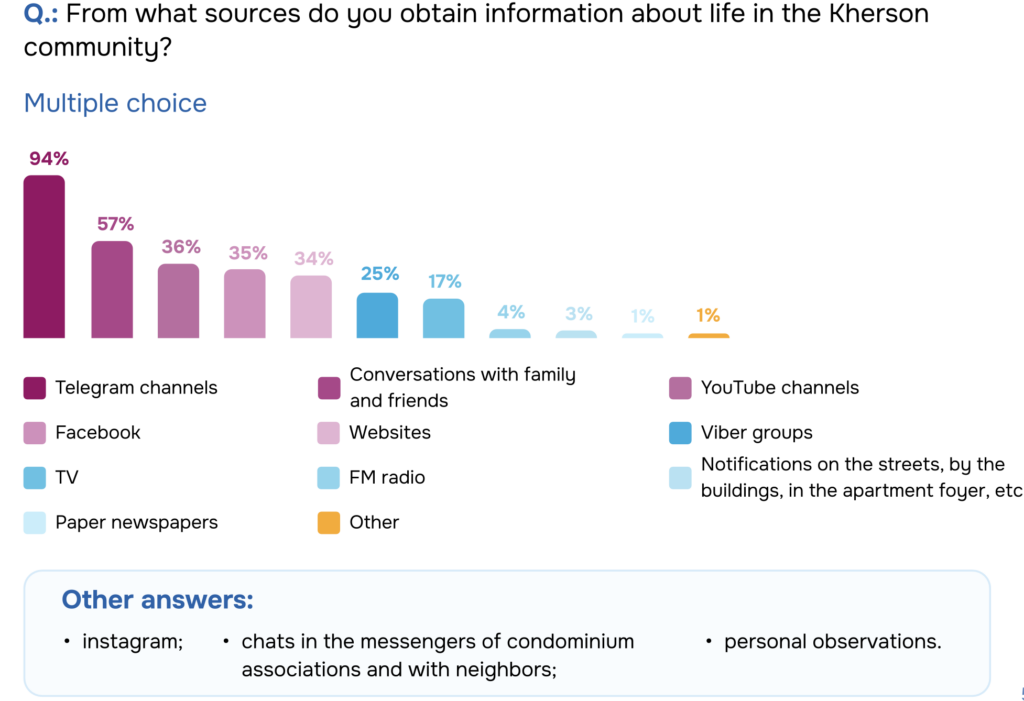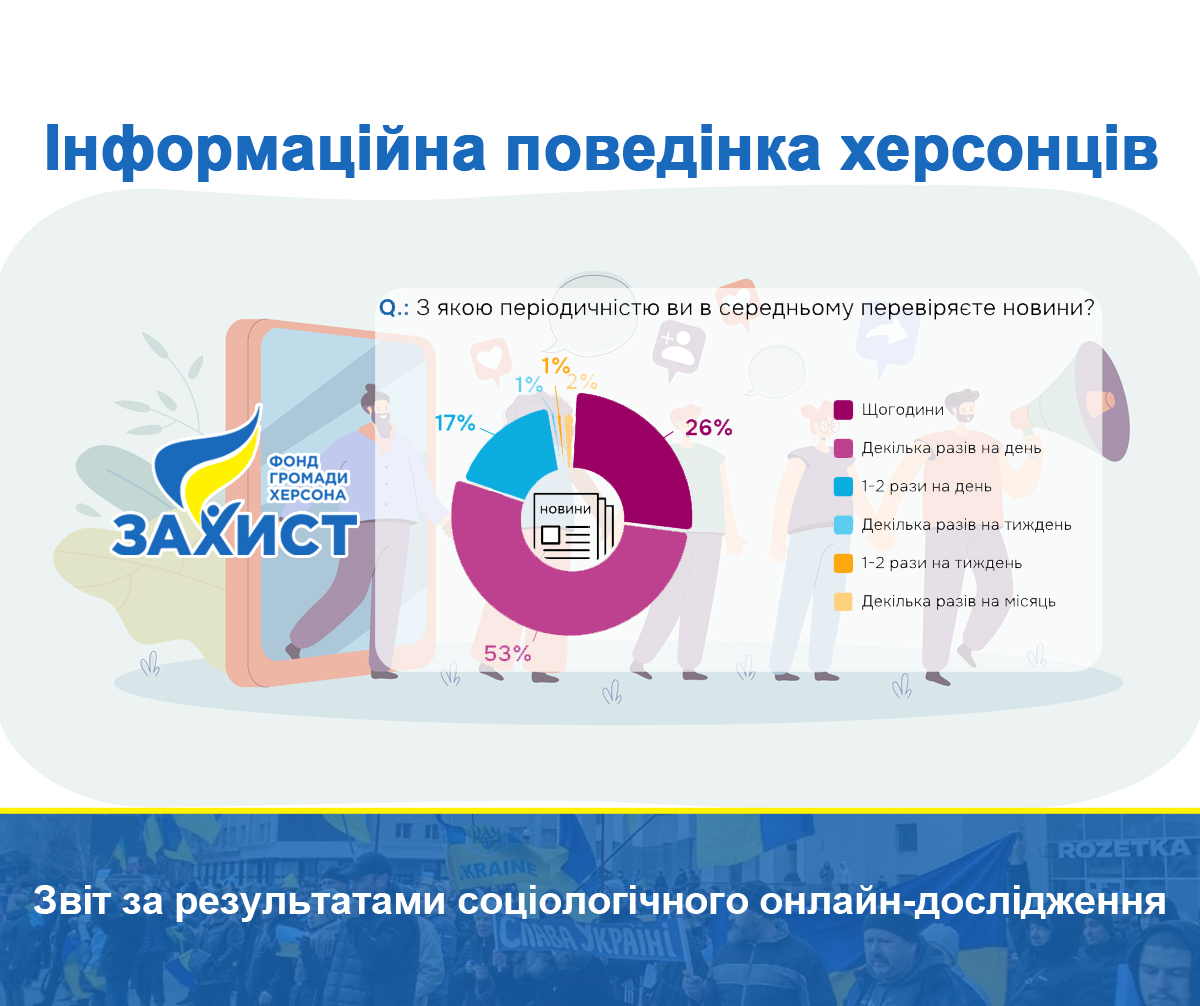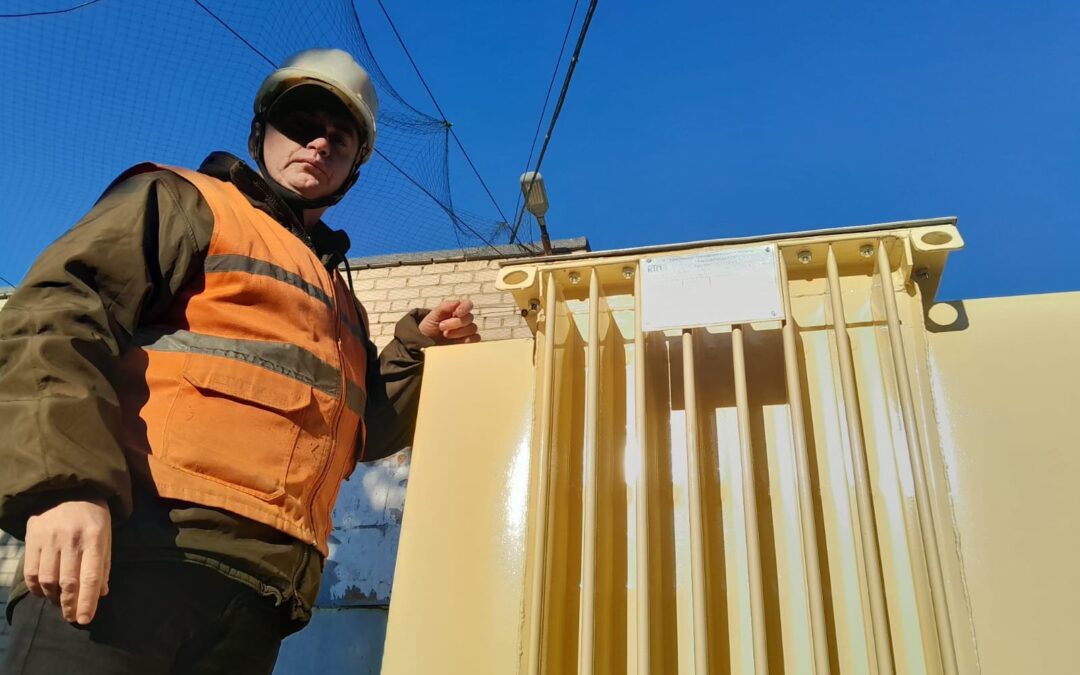Report on the results of an online survey based on an interactive structured questionnaire, the link to which was sent to potential respondents from the database (Kherson Community Research Online Panel).
Research objective: to find out the peculiar behavior of Kherson residents in the information field.
Key Findings:
More than half of the respondents read the news several times per day (53%). Almost a quarter (26%) read it every hour, and 17% chose the answer “1-2 times per day.”
94% of respondents opted for Telegram channels as the main source of information about the community. Communication with relatives and friends was in second place at 57%. Respondents browse YouTube channels, Facebook, and other websites with similar frequency – 36%, 35%, and 34%, respectively. Viber groups (25%) and TV (17%) were other major sources. Kherson residents living outside the community get information about Kherson mostly through personal contacts (66%), while current community residents choose Viber (30%) and TV (24%) most often.

The top three most popular Telegram channels were Khuyoviy Kherson (77%), Kherson: War without fakes (61%), and Nikolaevsky Vanyok (57%) (by share compared to others). Such Telegram channels as Suspilne Kherson (31%), Kostiantyn Ryzhenko (28%), Most (23%), and Vhoru.Kherson (20%) are also quite popular among surveyed Kherson residents. About 20% of respondents read the Telegram channels of the local authorities.
Respondents read official Telegram channels most frequently. 21% of respondents read the RSA-RMA (military administration at the regional/ oblast level) channel daily, and 22% read the city’s military administration channel. The official websites are in second place. 13% (Oblast level RSA- RMA) and 14% (city military administration) of respondents browse them daily. Facebook pages of military administrations are less popular (10% and 9% of daily views, respectively).
Surveyed Kherson residents claimed a higher frequency of using official sources. Thus, 26% and 31% of respondents read the Telegram channels of the RSA-RMA and city military administration daily, their official websites – 20% and 19%, respectively, and Facebook pages – 14% and 13%. Those living outside Kherson use official information resources less. 14% of respondents read the RSA-RMA Telegram channel, and 7% or less – all other resources.
Most often, respondents are looking for information about bombing (82%), community life (71%), air raid alerts (41%), social services (34%), recovery and reconstruction (33%), options to receive humanitarian aid (33%), and contact data of various institutions (29%). Kherson residents living outside the city look for information about bombing (88% to 78% of city residents) and community life (84% to 62%), as well as about recovery and reconstruction (38% to 30%) even more often.

The information the respondents lack most is related to options to obtain humanitarian aid (35%), social services (34%), and recovery (29%). Kherson residents living outside the city mostly lack information about recovery (37% to 23% of city residents) and compensation options (32% to 24%), while city residents more often lack information about the options to receive humanitarian aid (44% to 23%), free counseling (26% to 19%), and transportation (22% to 14%).
When comparing the information respondents searched for on official channels versus the one they had, we found that respondents had obtained sufficient information on almost all the listed topics before they even started searching for it. This proved that most information was already known, or that it had been successfully shared via other sources other than official channels. There was a lack of information about humanitarian aid, with only 39% of respondents indicating that it was sufficient (although only 33% searched for it). Also, only 47% found sufficient information about compensation for damaged housing (with 25% actively searching for it).
You can read the full report by downloading it:
This research was conducted by the Zakhyst Kherson Community Foundation Charitable Organization as a part of its project implemented under the USAID/ENGAGE activity, which is funded by the United States Agency for International Development (USAID) and implemented by Pact. The consents of this research are the sole responsibility of Pact and its implementing partners and do not necessary reflect the views of USAID or the United States Government
Reproducing and using any part of this product in any format, including graphic and electronic, copying or any other usage is suitable to reference to the source.




